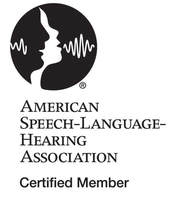|
What is Childhood Apraxia of Speech?
"CAS is a neurological childhood speech sound disorder in which the precision and consistency of movements underlying speech are impaired in the absence of neuromuscular deficits (e.g., abnormal reflexes, abnormal tone)..." (ASHA, 2007a, Definitions of CAS section, para. 1) What to look for… 10 Core Characteristics of CAS: 1.) Inconsistent errors on consonants and vowels in repeated productions of syllables or words 2.) Lengthened and disrupted co-articulatory transitions between sounds and syllables and difficulty with initial artic configurations 3.) Inappropriate prosody, especially in the realization of lexical and phrasal stress (robotic sounding, difficulty with intonation, rhythm, lack of variation in pitch or ability to control or decipher loudness) 4.) Consonant distortions 5.) Vowel errors – substitutions and distortions 5.) Groping 7.) Intrusive Schwa 8.) Brief or inappropriate pauses 9.) Slow rate of speech and increased difficulty with multi-syllable words 10.) Voicing errors (ASHA; 2007; Davis, Jacks & Marquardt, 2005; Iuzzuni-Siegel et al, 2015; Shriberg and Strand, 2014) A dynamic assessment is essential for a differential diagnosis of CAS! Where to begin... Assessment
Motor Speech Evaluation Determines motor planning ability for speech
Continuation of Assessment
For a more thorough assessment checklist, checkout my Teachers Pay Teachers store at www.teacherspayteachers.com/Product/Dynamic-Assessment-for-Childhood-Apraxia-of-Speech-Checklist-4438888
0 Comments
Leave a Reply. |

